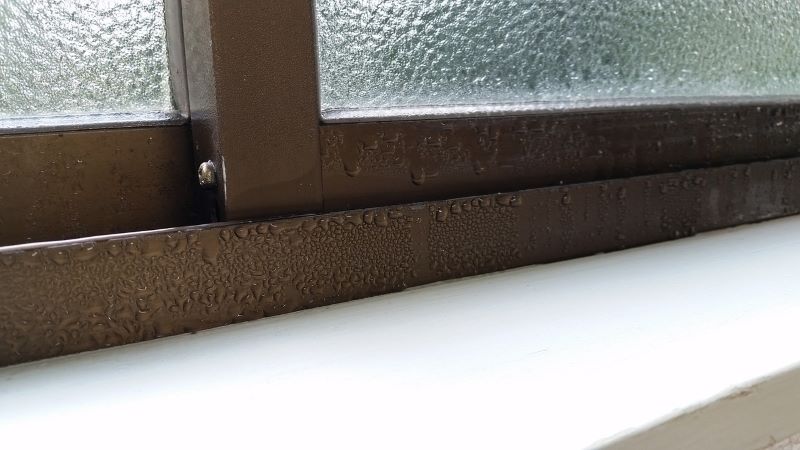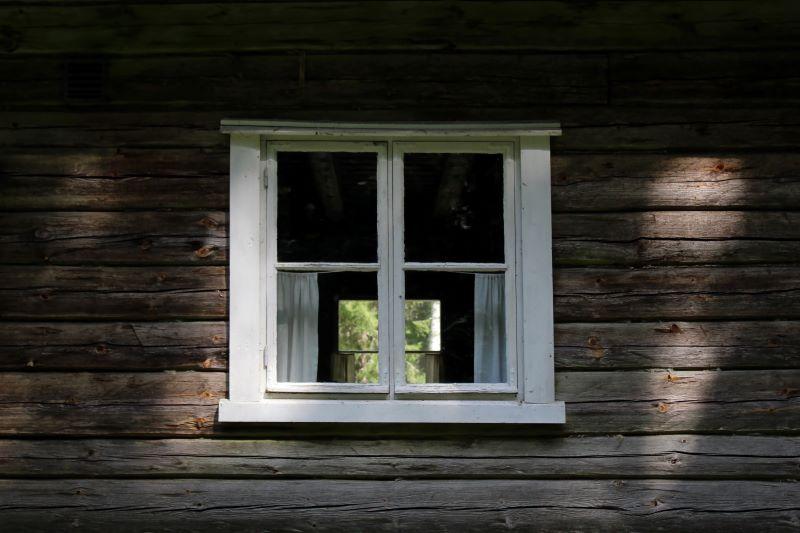Bundling up to deal with drafty old windows in your home doesn't have to be a part of the winter routine. It is fairly easy to learn how to fix drafty windows once you know how to detect air leaks and apply the right seals.
Even if you don't mind the extra blankets and layers, it is important to consider the impact drafty windows could have on your electricity bill and energy usage. Maintaining comfortable temperatures in each room is important for year-round comfort and energy efficiency. Heat can slip through the cracks, affecting the energy efficiency of your electric or gas heating. Feeling a breeze might indicate not just a faulty seal, but a greater issue in the structural integrity of your home. The air flowing through may also carry moisture, which reduces the effectiveness of insulation and can cause mold, mildew, and rotting - not optimal for maintaining a long-lasting structure.
To fix drafty windows, it's important to understand what causes these drafts and how they impact your home's energy efficiency. Solutions like sealing and insulating windows, installing weatherstripping, or using thermal curtains can make a big difference. By addressing drafty windows, homeowners can save money, reduce energy waste, and enjoy a warmer, more comfortable home during the colder months. Taking steps to fix drafty windows not only improves comfort but also helps protect your home from moisture and other issues that can arise from poor insulation.
How do I check for air leaks around my windows?
In order to fix a drafty window, you have to locate the airflow. An easy way to check for window drafts is to use an incense stick. Simply light it and slowly move it around the window frame; if you see the smoke waver or get pulled in a certain direction, that's a sign of cold air coming through a leak. Alternatively, you can wet your hand and hold it still in front of the window. Feel around in various places and mark the spots where you encounter cold air. Then, depending on where the draft is located, you will want to repair the seal, caulk, weatherstrip, or even replace the window altogether if the issue is structural. For larger gaps, insert a backer rod before sealing with foam or caulk to ensure a proper seal.
Air leaks are caused by ineffective seals and shifts in the space between the walls and windows in your home. The phenomenon of weather, specifically wind, moving parts of your structure and creating pressure is called deflection. This is what can render weatherstripping and other sealing methods ineffective after a while. It is important to measure the width of any gaps to select the right sealing material for effective insulation.
Where are my windows most vulnerable to leaks?
Leaks most often occur in windows with multiple movable parts, or when gaps appear in the wall around the window. If a window frame or pane rattles while opening or closing, it is leaking air.
While single-pane windows don't insulate very well, double-hung windows and sliding windows can also be prone to leaks. You might consider installing storm windows as an extra layer of protection.
Awning windows are similar to double-hung windows in that not only do they need a seal along the bottom, but along the sides too, much like double-hung windows. For casement windows, air may leak where the handle is, especially if the weatherstripping is loose and the window does not firmly lock in place.

Caulking and weatherstripping
Weatherstripping is very effective in sealing windows, and there are many choices of seals to fit your windows. The seals have varying levels of installation difficulty, but most can be installed yourself.
Weatherstripping should be checked twice a year and replaced as needed. It should run around the edges of the window and along the bottom of the pane. near any opening parts. If you're experiencing drafts, check to see if your stripping is damaged, folded, or not sitting correctly.
Caulking can fill in cracks and gaps in the structure around the window, and is affordable and simple to do yourself. It is primarily done on the outside of the house, between the window and siding. If you choose to go this route, note that a caulking gun is essential for applying caulk cleanly and effectively around window frames.
These simple repairs and preventive measures can make a significant difference in the effectiveness, energy efficiency, and longevity of your window and its supporting structure. However, before installing new weatherstripping or caulk, it's important to remove any old caulk and allow the surfaces to dry completely to ensure proper adhesion and sealing.
Other weatherstripping options, such as V-channel or foam tape, can also be used depending on the window type. Explore our guide on winterizing your windows and doors to discover more about the types of caulking and weatherstripping available.
How do I repair a window seal?
You can tell if a window seal is broken not only from a cold draft, but also whether there is condensation or fog on the inside of the panes on insulated windows, or if the glass is cracked. The fog can be taken care of with an anti-fog spray and liquid sealant. The vast majority of sealing options can be done yourself, depending on your handiness and experience.
If you do not feel comfortable repairing the seal yourself, check the warranty on your windows to see if the manufacturer is responsible for repairing issues. Installing the following seals, however, is fairly easy and can be done at home:
- For aluminum sliding windows and glass doors, a fin seal would be best. On a strip, the "Mylar fin" is the solid ridge in the middle of the strip, which makes a more snug seal when pressed against the window frame.
- Sweep/pile weatherstripping, which looks fuzzy, is also great for double hung windows, sliding windows, and doors.
- Compression weatherstrips, often called gaskets, are best for casement, hopper, and awning windows. They are typically bulb-shaped and compressible as the window squeezes tight.
Temporary fixes for a drafty window
If you need a quick solution for drafty windows, there are several temporary fixes that can help reduce energy waste and improve comfort right away. Thermal curtains or blinds are a simple way to block cold air from entering and keep warm air inside your home. These can be especially helpful at night or during particularly cold days.
Another easy fix is to apply a layer of plastic film or plastic sheets from a window insulation kit to your window using double-sided tape. After applying the film, use a hair dryer to shrink it for a tight seal. This creates an extra barrier against drafts and can be removed when the weather warms up.
For large gaps at the bottom of windows or doors, a draft snake, a fabric tube filled with insulating material, can be placed along the floor to stop cold air from seeping in. Draft stoppers are effective for sealing large gaps and can be purchased at a hardware store.
These solutions are ideal for renters or anyone looking for a cost-effective, non-permanent way to fix drafty windows and doors without professional installation. They help insulate windows and stop drafts until a more permanent fix can be made.
Benefits of energy efficiency
Improving your home's energy efficiency offers a wide range of benefits for homeowners. By sealing and insulating your home's windows, you can significantly reduce energy waste, lower your energy bills, and minimize your home's carbon emissions. Energy-efficient upgrades, such as installing new weatherstripping or using energy-efficient appliances, help create a more sustainable and environmentally friendly living space. According to Energy Star guidelines, upgrading your home's windows and following recommended insulation practices can further improve efficiency and reduce energy costs.
Energy efficiency also enhances the comfort and value of your home. Well-sealed windows help maintain a consistent indoor temperature, reduce drafts, and prevent moisture problems that can lead to mold or mildew. Many homeowners see significant improvements in comfort and savings after upgrading their home's windows. This not only makes your home more pleasant to live in but also increases its appeal to potential buyers. By investing in energy efficiency, homeowners can save money, improve air quality, and enjoy a healthier, more comfortable space for years to come.
Professional window replacement with Hodges
Say you've located a draft, updated your weatherstripping and seals, but the wind still slips through. You peel back your siding and notice a huge crack around the window, and the wood looks like it's taken some water damage. This malfunction in the structure of the frame can lead to bigger problems down the road, such as mold or pests living in the wood, and cannot be fixed by mere caulking. In cases where there is significant structural damage, replacing the window may be necessary to fully resolve the issue and restore energy efficiency. Damage to the exterior of the window or exterior doors can also contribute to drafts and should be inspected to prevent air leaks and maintain comfort.
If you're looking for more information on whether to replace or repair windows, check out our guide. If it is time for a replacement, the professionals at Hodges Company are here to help with quality brands and installation expertise.
Our dedicated customer support team is ready to assist you throughout your project and help you achieve the best possible savings on energy costs.


